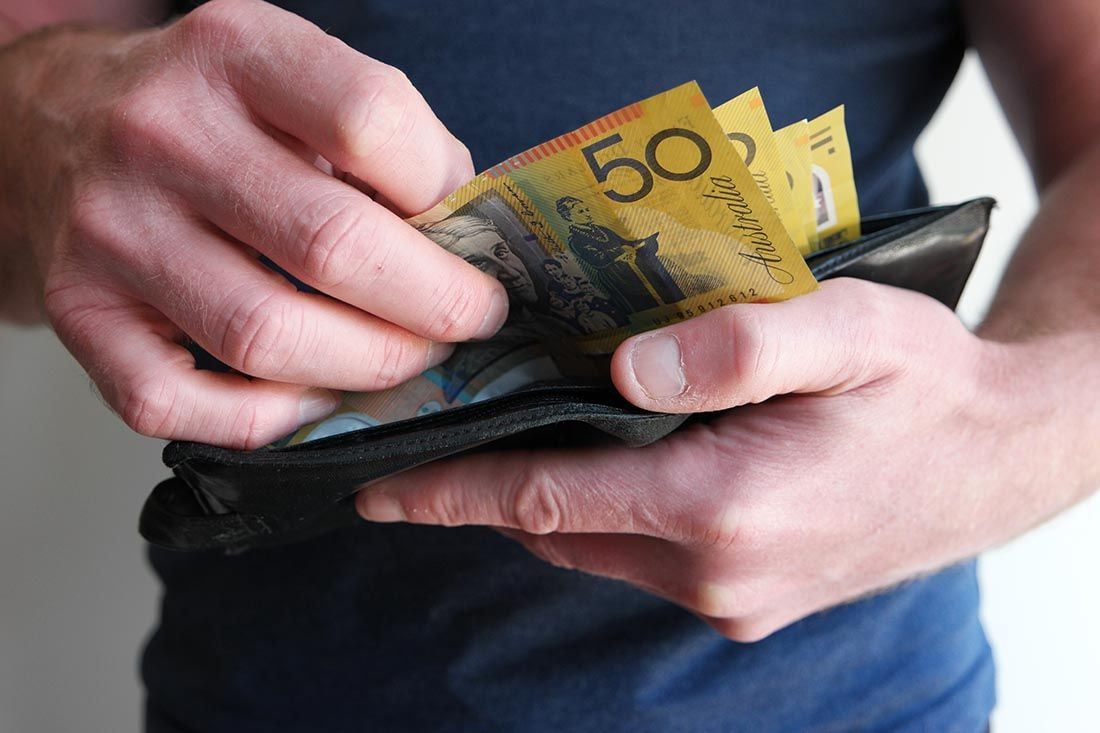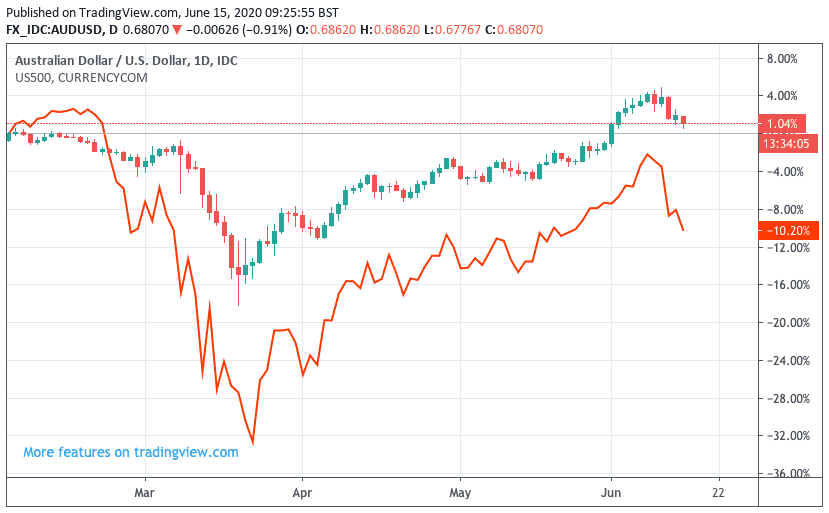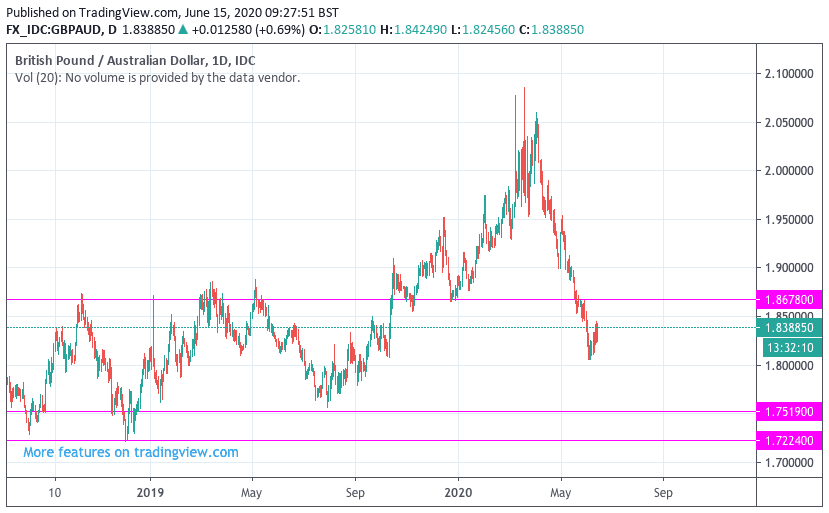Australian Dollar's Setback against the Pound Unlikely to Last
- GBP/AUD could fall to 1.7519 and then 1.7224
- AUD softer amidst global market selloff
- Markets skittish over covid-19 infections in U.S., China and India

Image © Adobe Stock
Secure a retail exchange rate that is between 3-5% stronger than offered by leading banks, learn more.
The Pound-to-Australian Dollar exchange rate has rallied by three quarters of a percent at the start of a new week to reach 1.8370 amidst another slump in stock markets and equity prices, however the trend for the pair remains lower according to the latest technical studies.
The Australian Dollar underperformed its major G10 peers as global equity and commodity prices turned lower at the start of the new week amidst investor unease over signs of pockets of covid-19 infection spikes.
Of concern are the rise of infection rates in a number of U.S. states, as well as in Beijing and India, which is now the country with the third highest number of reported cases.
Over the weekend, four U.S. states reported in excess of 16.5K new cases which makes for close to 40% of the total new cases in the US: California, Texas, Florida and Arizona.
According to data, 16 states in the U.S. are now estimated to have an R value over 1, which means the virus is actively growing in these states.
"The renewed increase in the number of COVID-19 infections puts a damper on risk appetite; the risk of a second wave cannot be ignored. The AUD may be feeling some pain in the coming weeks," says Marc André Fongern, Head of FX Spot & Options at Fongern Global Forex.
"Caution reigned and the U.S. dollar steadied amid renewed concerns about the coronavirus. The greenback was flat against the euro, yen and sterling but rose to two-week peaks against the Canadian and Australian dollars," says Joe Manimbo, Senior Market Analyst at Western Union.
Looking beyond the U.S., India's capital New Delhi is reported to be struggling to ramp up its health care capacity as it seeks to cope with an onslaught of new coronavirus cases, after the easing of restriction on movement and business activities in recent weeks.
The Delhi territory, which includes New Delhi, is now reportedly wrestling with a severe shortage of beds, and India’s social media has been replete with harrowing tales of families running from hospital to hospital attempting to find care for seriously ailing patients,
Beijing has meanwhile reported an upsurge in cases with half of Beijing’s reporting new coronavirus cases as a mass testing effort brought total cases to 79 in China’s most serious upsurge in the virus in months.
By Monday morning, authorities said many of the city’s central districts had discovered cases after about 76,500 people were tested the day before.
Media reported last week that a cluster of new covid-19 cases have been linked to Beijing’s largest seafood and vegetable market, with the outbreak amounting to the most serious resurgence of the disease in the country.
As long as markets are in the red over these developments we would expect the Australian Dollar to also struggle as the currency has a high correlation with the performance of global equities.
Above: AUD (bars) and S&P 500 (orange line)
One gauge of this relationship is how closely AUD follows the S&P500 (SPX), with one analyst noting that the relationship has actually tightened over the recent past.
"For AUD, sensitivity to SPX has been remarkably high and a standout story in G10 FX. Its SPX beta has steadily risen from 0.30 in the initial stages of the market rally to nearly 0.60 at present, meaning that a 10% rise in SPX has mapped to about a 6% rise in AUD/USD on average, about the 90th percentile historically," says Ben Randol, a strategist at BofA Global Research.
The move lower in the Australian Dollar in response to the losses in stock markets is reflected in a firmer Pound-to-Australian Dollar exchange rate which has snapped a seemingly relentless losing streak.
The pair is quoted at 1.8408 at the time of writing, having tested a floor around 1.8050 in early June.
A short-term base might therefore be forming which would allow Sterling to potentially recover some lost ground over the short term. However, sitting back and waiting for the GBP/AUD to rally could prove costly as any improvement in global sentiment will almost certainly undermine the pair.
Indeed, the broader trend in GBP/AUD remains resolutely down, with analysis from Trading Central showing that unless and until the pair moves back above 1.8678 it is likely to remain under pressure.
Above: GBP/AUD daily chart with potential downside targets and the pivot shown at 1.8678
1.8678 is identified as an area of resistance that if broken would pivot to a support level that would underpin a more sustained recovery.
Technical signals are however advocating for further losses in GBP/AUD with the RSI - a measure of momentum - located below 50 and therefore sympathetic to further declines.
"The MACD is below its signal line and negative. The configuration is negative. Moreover, the pair is trading under both its 20 and 50 MAs (respectively at 1.8511 and 1.9134)," says Trading Central.
Downside forecast targets are located at support levels 1.7519 and then 1.7224.






